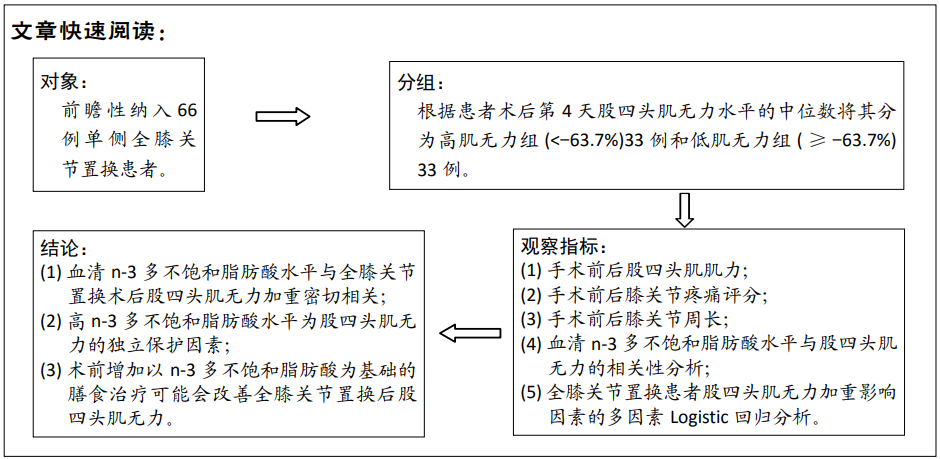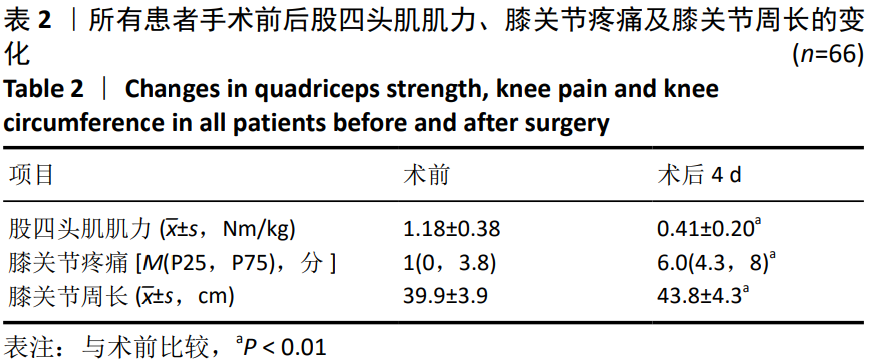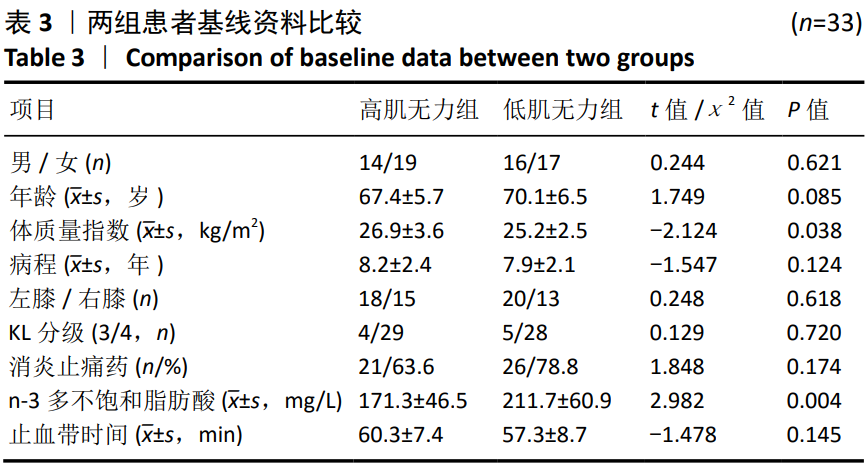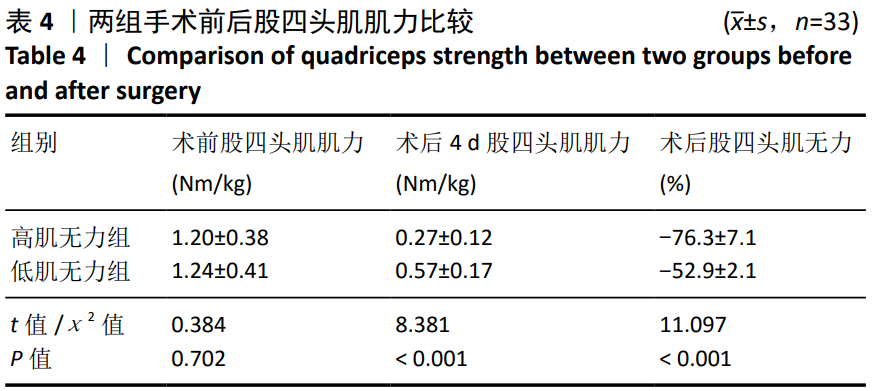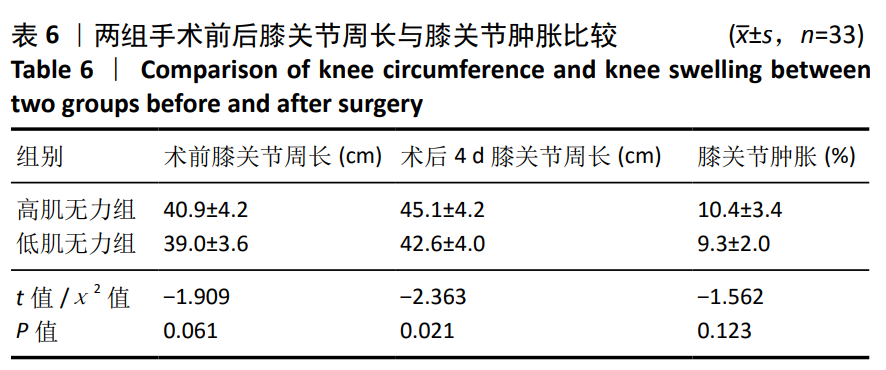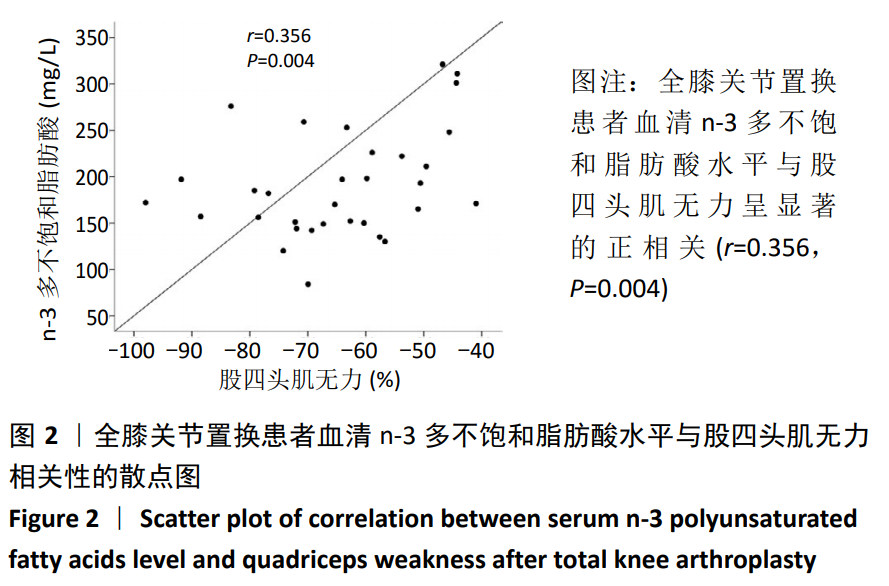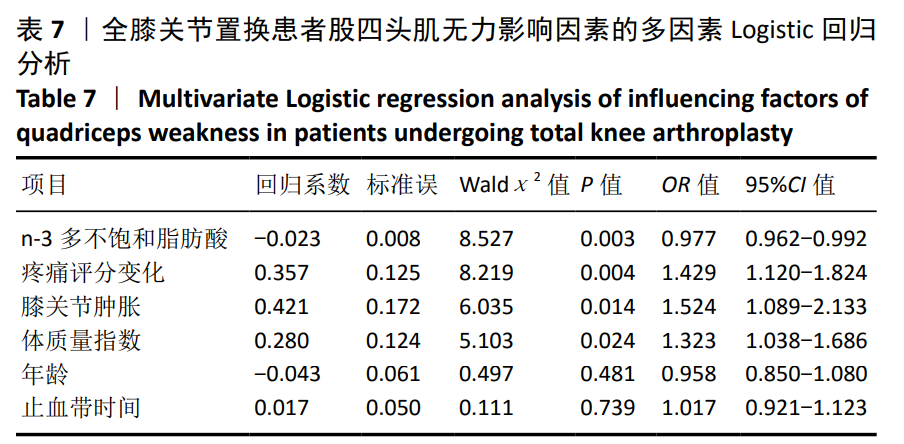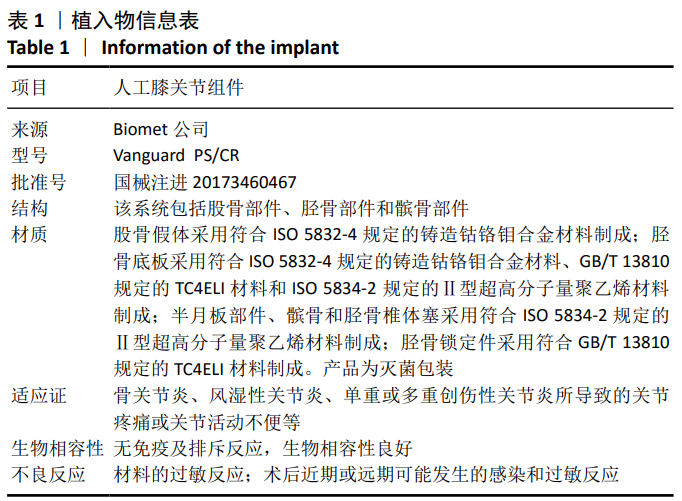[1] 郭子荷,王春婷,陆巍.全膝关节置换术患者肌力康复护理的证据综合[J].护理学杂志,2019,34(21):7-10.
[2] 周萌,林川,贾晶丽, 等.膝关节置换术后患者出院随访的最佳证据总结[J].中华护理杂志,2019,54(12):1877-1880.
[3] LEON-MUNOZ VJ, LISON-ALMAGRO AJ, HERNANDEZ-GARCIA CH, et al. Silicone ring tourniquet versus pneumatic cuff tourniquet in total knee arthroplasty surgery: A randomised comparative study. J Orthop. 2018; 15(2):545-548.
[4] HASANAIN MS, APOSTU D, ALREFAEE A, et al. Comparing the Effect of Tourniquet vs Tourniquet-Less in Simultaneous Bilateral Total Knee Arthroplasties. J Arthroplasty. 2018;33(7):2119-2124.
[5] 凌坤,宋超,石秀霞.膝关节置换术后下肢深静脉血栓危险因素研究[J].中华实验外科杂志,2019,36(5):843.
[6] DENNIS DA, KITTELSON AJ, YANG CC, et al. Does T ourniquet Use in TKA Affect Recovery of Lower Extremity Strength and Function? A Randomized Trial. Clin Orthop Relat Res. 2016;474(1):69-77.
[7] PIUZZI NS, STRNAD GJ, SAKR ESA WA, et al. The Main Predictors of Length of Stay After Total Knee Arthroplasty:Patient-Related or Procedure-Related Risk Factors.J Bone Joint Surg Am.2019;101(12): 1093-1101.
[8] 罗盛飞,曲由,陈建,等.髌骨肌贴对股四头肌肌力及膝关节疼痛的影响[J].中国组织工程研究,2014,18(25):4078-4083.
[9] PUA YH. The Time Course of Knee Swelling Post Total Knee Arthroplasty and Its Associations with Quadriceps Strength and Gait Speed.J Arthroplasty. 2015;30(7):1215-1219.
[10] WANG K, NI S, LI Z, et al. The effects of tourniquet use in total knee arthroplasty: a randomized, controlled trial.Knee Surg Sports Traumatol Arthrosc.2017;25(9):2849-2857.
[11] DREYER HC. Tourniquet Use During Knee Replacement Surgery May Contribute to Muscle Atrophy in Older Adults.Exerc Sport Sci Rev. 2016; 44(2):61-70.
[12] GULER O, MAHIROGULLARI M, ISYAR M, et al. Comparison of quadriceps muscle volume after unilateral total knee arthroplasty with and without tourniquet use. Knee Surg Sports Traumatol Arthrosc. 2016;24(8):2595-605.
[13] BU J, DOU Y, TIAN X, et al. The Role of Omega-3 Polyunsaturated Fatty Acids in Stroke. Oxid Med Cell Longev. 2016;1(1):6906712.
[14] WANG B, WU XW, GUO MX, et al. Effects of omega-3 fatty acids on toll-like receptor 4 and nuclear factor-kappaB p56 in lungs of rats with severe acute pancreatitis.World J Gastroenterol.2016;22(44): 9784-9793.
[15] 中华医学会骨科学分会关节外科学组.骨关节炎诊疗指南(2018年版)[J].中华骨科杂志,2018,38(12):705-715.
[16] PUA YH, POON CL, SEAH FJ, et al. Comparative performance of isometric and isotonic quadriceps strength testing in total knee arthroplasty. Musculoskelet Sci Pract.2018;37(1):17-19.
[17] SI HB, YANG TM, ZENG Y, et al. Correlations between inflammatory cytokines,muscle damage markers and acute postoperative pain following primary total knee arthroplasty.Bmc Musculoskeletal Disorders. 2017;18(1):1-9.
[18] PARAVLIC AH, KOVAC S, PISOT R, et al. Neurostructural correlates of strength decrease following total knee arthroplasty:A systematic review of the literature with meta-analysis.Bosn J Basic Med Sci.2020;20(1): 1-12.
[19] CHRISTENSEN JC, MIZNER RL, BO FOREMAN K, et al. Preoperative quadriceps weakness preferentially predicts postoperative aberrant movement patterns during high-demand mobility following total knee arthroplasty.Knee.2019;26(1):79-87.
[20] 赵俊涛,郑成胜,王博.全膝关节置换中止血带的优化应用方案[J].中国组织工程研究,2019,23(20):3124-3129.
[21] LOYD BJ, STACKHOUSE SK, HOGAN C, et al. Peripheral Nociception Is Associated with Voluntary Activation Deficits and Quadriceps Weakness Following Total Knee Arthroplasty.J Bone Joint Surg Am. 2019;101(17): 1539-1545.
[22] ILFELD BM, BALL ST, GABRIEL RA, et al. A Feasibility Study of Percutaneous Peripheral Nerve Stimulation for the Treatment of Postoperative Pain Following Total Knee Arthroplasty.Neuromodulation. 2019;22(5):653-660.
[23] LAUBACH M, HELLMANN JT, DIRRICHS T, et al. Anterior knee pain after total knee arthroplasty:A multifactorial analysis.J Orthop Surg (Hong Kong). 2020;28(2):2309499020918947.
[24] KILGAS MA, DENHERDER AE, LYTLE LLM, et al. Home-Based Exercise With Blood Flow Restriction to Improve Quadriceps Muscle and Physical Function After Total Knee Arthroplasty:A Case Report.Phys Ther. 2019;99(11):1495-1500.
[25] SVAHN SL, GUTIERREZ S, ULLERYD MA, et al. Dietary Polyunsaturated Fatty Acids Promote Neutrophil Accumulation in the Spleen by Altering Chemotaxis and Delaying Cell Death.Infect Immun. 2019;87(8):1-9.
[26] BIRD JK, CALDER PC, EGGERSDORFER M. The Role of n-3 Long Chain Polyunsaturated Fatty Acids in Cardiovascular Disease Prevention, and Interactions with Statins. Nutrients. 2018;10(6):1-6.
[27] 李程,张坚.n-3多不饱和脂肪酸对老年人认知障碍影响的研究进展[J].中国慢性病预防与控制,2019,27(12):943-947.
[28] 张珊,李红,董矜, 等.老年人多不饱和脂肪酸水平与血脂血糖的相关性分析[J].中华保健医学杂志,2016,18(1):27-30.
[29] BROWN MJC, VELLA-BALDACCHINO M, O’FLAHERTY E, et al. Predicting patient reported outcome in total knee arthroplasty using body mass index and limb measurements.Knee. 2018;25(5):915-922.
[30] LOYD BJ, STACKHOUSE S, DAYTON M, et al. The relationship between lower extremity swelling,quadriceps strength,and functional performance following total knee arthroplasty.Knee.2019;26(2): 382-391.
[31] 曹青刚,包倪荣.止血带导致全膝关节置换术后肢体肿痛机制的研究[J].医学研究生学报,2019,32(4):428-431.
|
